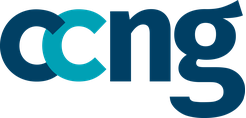A sea change in talent acquisition happened in the past 20 years. Now it is time for another! Technology originally created to find the best talent, that at one time worked very well, now keeps qualified job candidates hidden from view as automated systems screen them out. The very technology companies implemented to hire “perfect” candidates is now keeping perfectly capable candidates hidden at a time employers are struggling to find workers.
One way to find hidden workers is to reconfigure systems to identify applicants who have needed skills, instead of focusing on resumes. Focusing on 1) the specific skills needed to perform the job at hand, or 2) relevant job or life experiences that has provided those skills, opens the doors to people who may not have those things listed on a traditional resume.
Many current Recruiting Management Systems (RMS) reward cutting costs. That has worked very well historically, but in the current job market companies should instead emphasize human asset maximization. Spending more money to reconfigure RMS, or adding more personnel to talent acquisition teams, can enable companies to find talent otherwise hidden from their view. Doing so can make companies more productive and profitable as well.
Research conducted in partnership with Accenture and Joseph B. Fuller, Professor of Management Practice and co-lead of Harvard Business School’s Project on Managing the Future of Work, demonstrates companies that hire from hidden talent pools are 36% less likely to face talent shortages AND 35% more likely to meet diversity quotas. (https://www.accenture.com/bg-en/insights/consulting/finding-hidden-talent) So learning to identify, find, and hire hidden talent gives companies a competitive advantage.
Overall, there are 3 types of hidden workers:
-
Those missing from the workforce as a whole—Senior citizens, people with disabilities, people with gaps in employment, people with a criminal record, caretakers, military spouses.
-
Those out on leave of absence—medical leave, parental leave, people out on sabbatical.
-
Those merely missing hours—medical appointments, childcare issues, sick, struggling with mental health.
Identifying which type of hidden workers could best help your organization meet current employment needs is the first step in defining how to maximize human assets.
The process of finding hidden talent will vary from one company to the next. Below are several considerations that can help get you started. Choosing one or two that best meet the needs of your organization is a wonderful way to start.
-
Automated tools are great but have other options as well. Leverage current technology to filter IN, not OUT. Consider places to post jobs you haven’t used in the past such as local or regional job centers where people go in person to get help with the job search.
-
Ask your Employee Resource Groups (ERGs) to brainstorm ideas. If you don’t have ERGs, start some! Groups focused on ethnicity, religion, immigrants, disability, women, the LGBTQ community, mental health, veterans, working parents, and even sustainability may have great ideas on how to reach hidden talent.
-
Evaluate your current workforce. Who is missing hours? Who could benefit from having a mentor? Who can benefit from being a mentor? Sometimes your BEST hidden workforce is already working for you. Instead of giving warnings to, or firing workers who are struggling to perform or missing work, offer support and solutions.
-
Evaluate your current diversity. How can you increase it? That is a hidden talent pool for your organization!
-
Discover who is already loyal to your brand or product. Consider offering gig work to people loyal to your brand and who would be grateful for the chance to engage.
-
Simplify the process of applying for jobs and keep up to date on accessibility standards. Whenever possible, answer in real time even if it is only though chatbots. Keep in touch with applicants through automated tools or in person if the decision may take time. Invite applicants to apply for other open jobs at your company. Most importantly for hidden workers, keep a human in the loop!
Kate is passionate about Diversity and Inclusion initiatives and is glad she can combine that with her work at nonprofit NTI. She loves connecting Fortune 500 companies with the disability community and teaching that being inclusive in the workplace is not only the right thing to do, but also means better profit margins. It has the added benefit of making business better and customers happier. Kate is also an advocate for disability rights and can often be found online advocating for inclusion, accessibility, and diversity. She is a frequent contributor/speaker/guest on podcasts and at many customer service and contact center organizations and events where she loves discussing CX, EX, and remote work.



